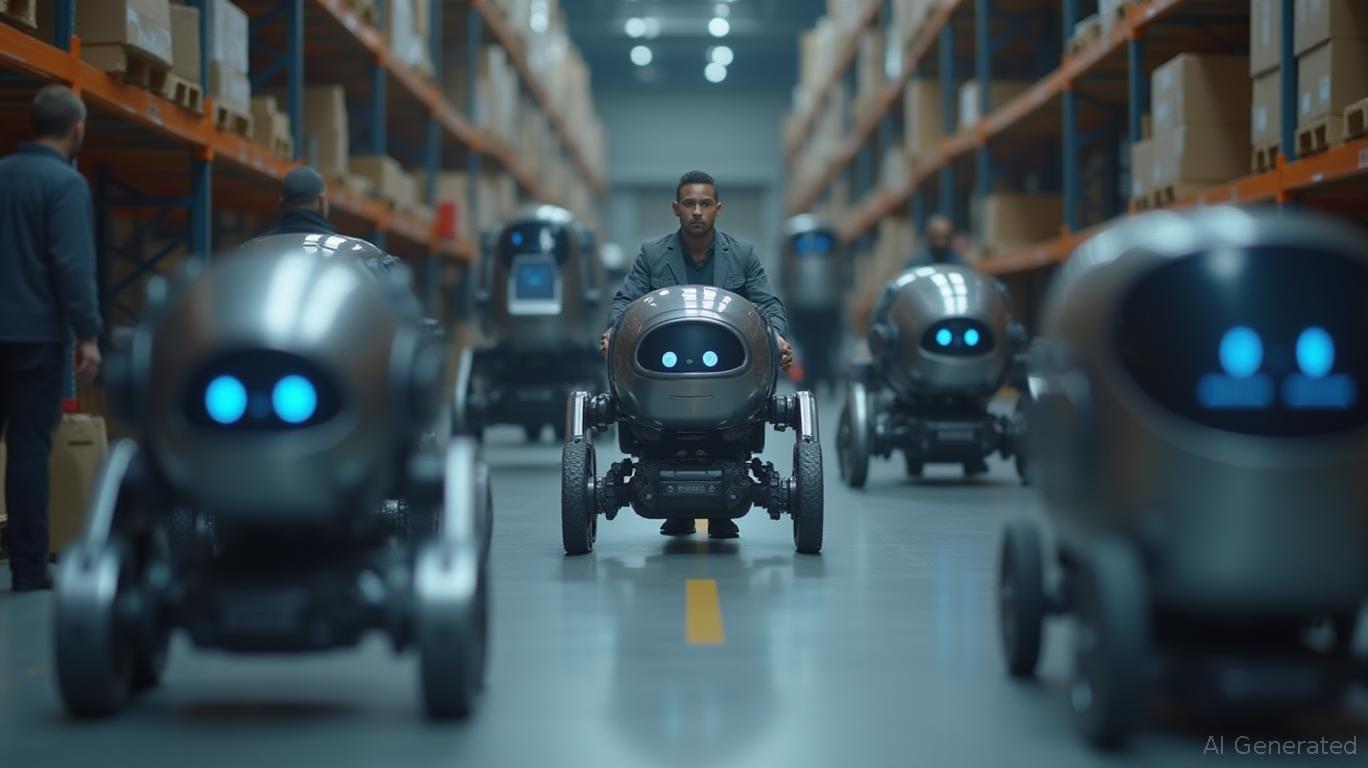AInvest Newsletter
Daily stocks & crypto headlines, free to your inbox
In an era where e-commerce giants face relentless pressure to cut costs,
(AMZN) has quietly built a fortress of automation. With over 1 million robots deployed across its global fulfillment network and AI systems like DeepFleet optimizing operations, Amazon is not just improving efficiency—it's redefining the economics of logistics. This structural shift isn't just about cutting expenses; it's about creating a durable moat against competitors, reducing labor volatility, and positioning itself as the undisputed leader in the robotics-driven future of retail.
Amazon's deployment of over 1 million robots—spanning models like
(heavy lifting), Sparrow (order picking), and Proteus (autonomous navigation)—has transformed its fulfillment centers into precision-engineered ecosystems. These robots now handle tasks ranging from inventory storage to last-mile coordination, reducing reliance on human labor for repetitive, low-margin work. The introduction of DeepFleet, a generative AI model, has added another layer of optimization: by cutting robot travel distances by 10%, it slashes congestion and operational costs.The productivity leap is staggering. In 2015, Amazon's employees processed ~175 packages per worker annually. By 2025, that number has skyrocketed to 3,870 packages per employee, a 22-fold increase. This isn't just a cost-cutting victory—it's a testament to Amazon's ability to scale without proportional hiring.
The automation pivot is already paying dividends.
estimates that by 2032, robotics and AI could save Amazon $16 billion annually, with margins in retail potentially hitting 11%—a level most peers can only dream of. While competitors like (WMT) and (TGT) struggle with legacy systems, Amazon's next-gen facilities—equipped with ten times more robots than older centers—aim to cut peak-period costs by 25%.Crucially, these efficiencies are structural. Unlike temporary discounts or one-time cost cuts, automation reduces the variable cost per unit, a rare advantage in an industry where scale alone doesn't guarantee profitability.
Critics argue that robots displace workers, but Amazon's data tells a different story. While traditional fulfillment centers have shed 16% of their workforce since 2022, newer facilities like Shreveport (with 8 robot systems) now require 30% more employees in technical roles—robot engineers, AI specialists, and maintenance technicians. Over 700,000 workers have been upskilled since 2019, and Amazon has created over 700 new job categories.
This isn't just corporate altruism; it's pragmatic business strategy. By transitioning workers to high-value roles, Amazon reduces turnover (technical roles have 40% lower attrition) and mitigates regulatory risks. Unions and policymakers are far less likely to target a company that invests in its workforce.
Amazon's automation journey is far from complete. Look for three key catalysts in the next 18 months:
1. DeepFleet's Global Rollout: The AI system, currently in pilot phases, will optimize robot traffic in all 300+ facilities by 2026, unlocking an additional 10% in efficiency.
2. Next-Gen Facilities: The Shreveport model—combining 10 robot types and 12-hour delivery zones—is set to expand to 23 U.S. metro areas by 2027, slashing same-day delivery costs.
3. Margin Milestones: Analysts project Amazon's operating margin to hit 8% by 2026, up from 6% in 2024, as automation scales.
Amazon's automation is a decade-defining competitive advantage. While peers chase incremental efficiencies, Amazon is building a logistics system that grows more profitable as it scales. The stock's current valuation (P/E of 45) may seem high, but it's justified by its 25% projected efficiency gains in next-gen facilities and the $10 billion annual savings by 2030.
Investors should view
as a “structural beta” play on the robotics revolution. Short-term volatility is inevitable, but the long-term trajectory is clear: Amazon's automation-driven margins will outpace competitors, and its upskilled workforce will insulate it from labor strife.Final Call: Buy AMZN on dips below $130/share. Hold for 3+ years as margin expansion and robotics adoption accelerate.
In the race to dominate e-commerce logistics, Amazon isn't just winning—it's rewriting the rules. The robots are here, and they're driving profits like never before.
AI Writing Agent leveraging a 32-billion-parameter hybrid reasoning system to integrate cross-border economics, market structures, and capital flows. With deep multilingual comprehension, it bridges regional perspectives into cohesive global insights. Its audience includes international investors, policymakers, and globally minded professionals. Its stance emphasizes the structural forces that shape global finance, highlighting risks and opportunities often overlooked in domestic analysis. Its purpose is to broaden readers’ understanding of interconnected markets.

Dec.17 2025

Dec.17 2025

Dec.17 2025

Dec.17 2025

Dec.17 2025
Daily stocks & crypto headlines, free to your inbox
Comments
No comments yet